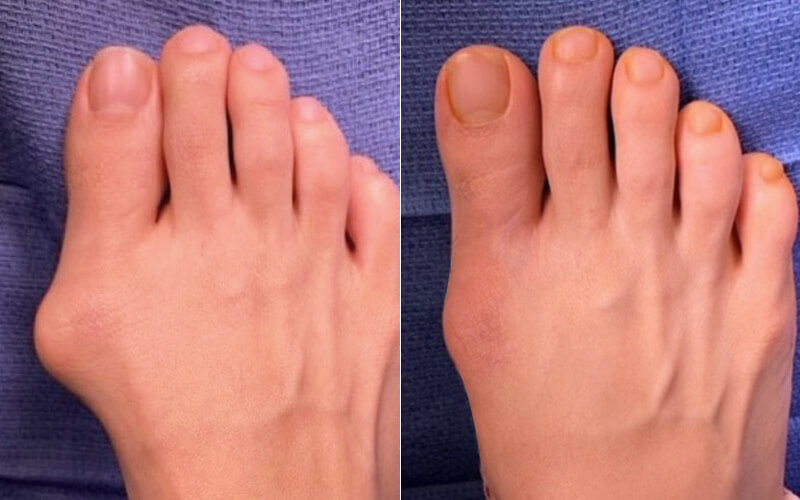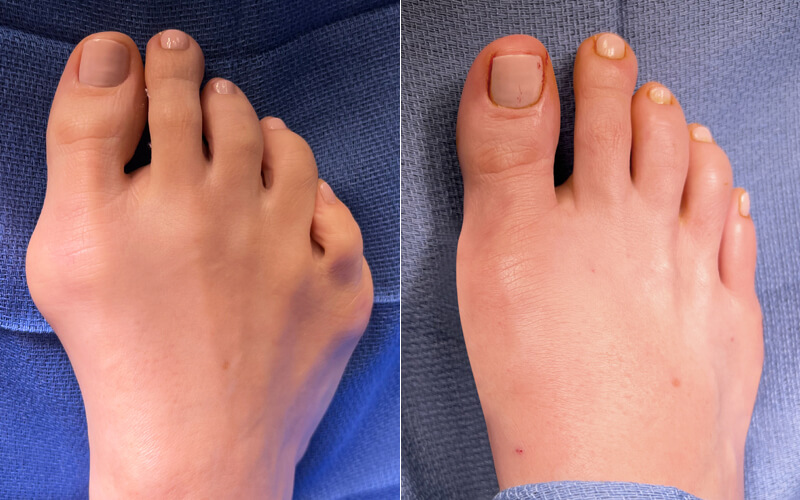Tendon Injuries Los Angeles – Tendon Surgery Beverly Hills
Your feet and ankles are composed of a complex system of bone, muscle, ligaments, and tendons. Because they are designed to support your entire body, these tissues are more prone to injuries than other areas of the body. Tendon injuries in the foot and ankle are fairly common. Unfortunately, many people fail to treat these injuries, assuming that foot pain is routine and will heal on its own. Tendon injuries especially can be deceptively painless. However, it is important to seek medical attention whenever a tendon injury occurs, as they can become worse over time if left untreated. What may start as simple tendonitis can turn into a chronic condition that may even require surgery to correct. Dr. Jamshidinia is a specialist in the field of foot and ankle injuries. Scheduling an appointment with him at his Los Angeles office at the first sign of tendon injuries can get you the treatment you need and help prevent long-term complications.

Common Tendon Injuries
There are a number of common tendon injuries that can occur. They can range from mild conditions that are easily treatable to serious chronic problems that may require surgery to correct. Regardless of the severity of the injury, it is wise to seek medical attention in order to get the proper treatment and prevent the problem from getting worse. Some common injuries to watch out for include:
1. Achilles Tendonitis
Tendonitis is a condition marked by inflammation and tenderness just above the heel. It occurs when the Achilles tendon gets strained from overuse. Although it may seem like an injury that only affects athletes, the truth is that tendonitis can happen to anyone. It usually happens after chronic strain, but it can also occur after an acute injury. Treatment for tendonitis is usually conservative, with most treatments involving the use of custom orthotics or physical therapy. Orthotics can be worn like insoles to correct the movement of the foot or cushion pressure points, relieving strain on the tendon. Physical therapy involves stretching the tendon to alleviate the pressure. In extreme cases, tendonitis can be caused by a short calf muscle. In these cases, surgery can be used to lengthen the calf muscle, relieving the tension on the Achilles.
2. Achilles Tendinosis
Chronic tendonitis can become worse over time if left untreated. Tiny micro tears can form in the tendon, which then turn into scar tissue. This condition is known as Achilles tendinosis. Because of the scar tissue, the tendon becomes thicker and painful. The body cuts off the blood supply necessary for repairing the damaged tissue. This makes the goal of any successful treatment to stimulate the body’s own natural healing response. Custom orthotics and physical therapy can be attempted in the early stages of the disorder, but more invasive measures are usually required. Surgery can be used to remove the scar tissue and protect the tendon to allow it to heal. A new treatment, known as Topaz coblation, can be performed with a small incision or no incision to break up the scar tissue and encourage blood flow to the area so it can heal.
3. Achilles Tendon Rupture
An acute rupture of the Achilles tendon can be quite serious if left untreated. Most patients report feeling like they were kicked in the ankle while running. The rupture is usually accompanied by only minimum pain, but a torn tendon is nonetheless immobilizing. If the rupture is not repaired soon, the tendon ends can separate to the degree where reattachment is impossible. If surgery is performed soon enough, the tendon ends can be reattached to each other and the patient can walk with a cast after just a few weeks. Movement and physical therapy are then used to increase strength and flexibility in the newly repaired tendon.
4. Chronic Achilles Tendon Tear
Sometimes, an Achilles tear is only partial at first. Because of the low level of pain, many people fail to seek treatment until the condition becomes more severe. A chronic Achilles tendon tear occurs when a partially torn tendon ruptures completely. In these cases, reattachment is usually not an option, since the tendon has had a chance to separate. The gap between the tendon ends is usually repaired using a graft from the adjacent tendon. The middle third of this tendon is removed, then carefully attached the separated tendon ends.
5. Bone Spur
Bone spurs occur on the heel when the Achilles tendon pulls too tightly on the bone. This extra bone tissue can be painless and require no treatment. But when the bone spur begins to irritate the surrounding tissue, custom orthotics or physical therapy may be used to alleviate the pain. If these measures prove unsuccessful, surgery may be performed to remove the bone spur. The Achilles tendon is opened, the bone spur is removed, and the tendon is resealed so that healing can begin.
6. Posterior Tibial Tendon Tear
The posterior tibial tendon runs along the bottom of the foot, supporting the arch when walking and standing. Problems with this tendon typically affect women between 40 and 65 who have flat feet. Early issues with this tendon can be treated with physical therapy, custom orthotics, and sometimes a brace to encourage better mechanics in the gait. If a tendon tear occurs, it will need to be surgically reattached. Topaz treatment can be used to remove damaged tissue. Sometimes, the tendon will need to be anchored back to the bone. In some cases, the flat feet may need to be corrected by moving the heel bone or fusing bones in the bottom of the feet together. If the condition is not treated, the fallen arch can become worse and arthritis can develop.
7. Peroneal Tendon Tear
The peroneal tendons are a pair of tendons on the outside of each ankle. Ankle sprains and instability can cause a weakening of the tendons, leading to tendonitis and tearing. Custom orthotics and special braces can be used to stabilize the ankles in cases of tendonitis. The tendons are then strengthened through physical therapy, which can also reduce inflammation. Surgery to repair a torn peroneal tendon can be performed using several methods. The tendon can be relocated and the groove it rests in can be deepened to increase stability. If the tear is severe enough, the damaged tissue can be removed and the two tendons can be sewn together to form one stronger tendon.
8. Tenosynovitis
Inflammation of the sheath that surrounds the tendon can cause pain and difficulty moving the affected area. It is more common in the fingers and wrists than the feet or ankles. Pain medication and corticosteroid injections can be used to alleviate pain and reduce inflammation. Physical therapy may be used in conjunction with immobilization of the affected joint. In extreme cases, surgery may be required to return normal gliding function to the tendon sheath.
Tendons -Frequently Asked Questions:
Using custom orthotics can help correct the mechanics of the feet, reducing the risk of injury to the tendons. Avoiding chronic and acute strain to the tendons is also recommended. Exercise routines should be implemented in stages, with an emphasis on not doing too much too soon. Unfortunately, conditions like flat feet can cause tendon injuries even when care is taken to avoid them.
Any time a tendon injury occurs, medical attention is advised to ensure the best method of treatment. Although these injuries do not require emergency treatment, even minor injuries can become worse over time if not properly treated. Scheduling an appointment with Dr. Jamshidinia can help you get the best possible treatment




